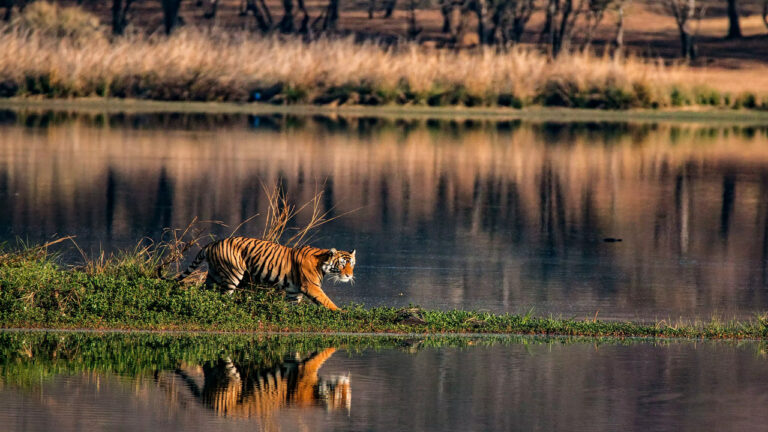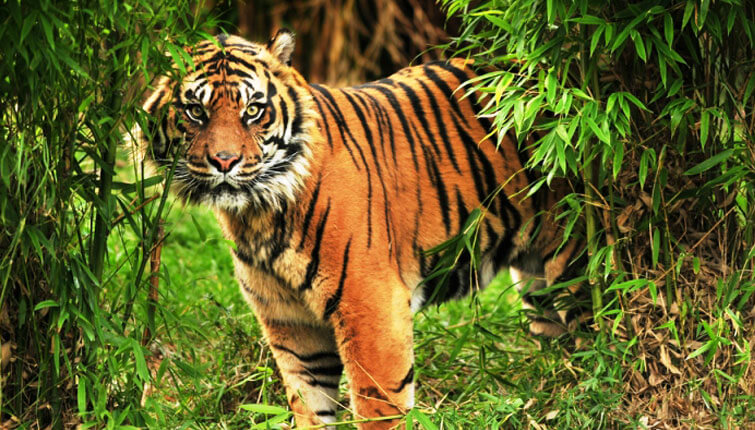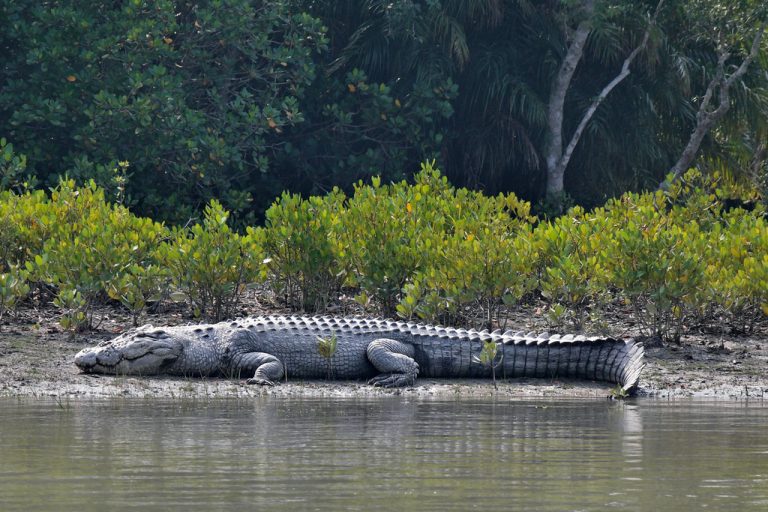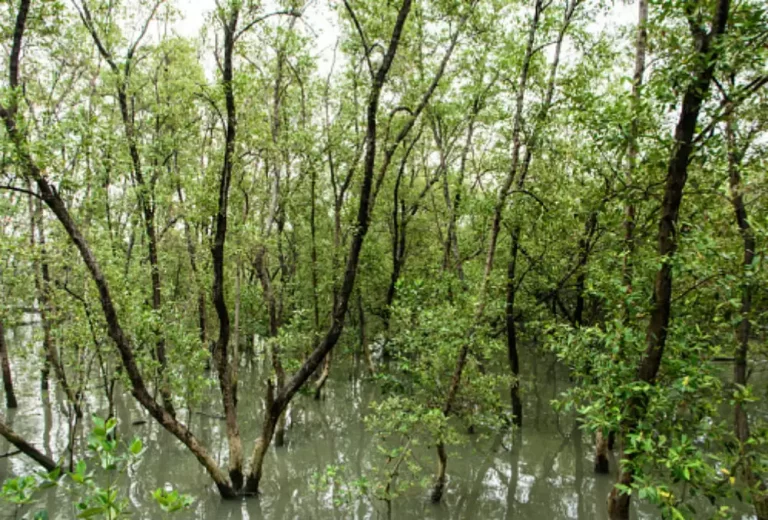Mangrove forests covering 10,200 square kilometres of land in Bangladesh and India make up Sundarban, the largest delta in the world. Sundarbans National Park is the name of the section of the forest that is on Indian soil and is located in the southern region of West Bengal.
The Sundarbans cover an area of 38,500 sq km, a third of which is nearly marshland or water. It is stated that the forest got its name from the numerous Sundari trees that can be found there.
Sundarbans National Park is easily accessible via roadways, railways, and waterways, with the added convenience of air travel connecting the park to the rest of the world. Visitors from all over the globe come to this forest not just to witness the amazing wildlife, but also to take in the breathtaking views of the serene delta landscape. The park can be explored via water transport that sails through various river channels that divide the land into deltas. While the park is open for safari throughout the year, planning your visit during the best time to visit Sundarbans National Park can enhance your experience and make it even more enjoyable and memorable.
Many other wild animals, including crocodiles, spotted deer, wild boar, huge lizards, jungle birds, and enormous lizards, have made it their natural home. During their migration season, Siberian ducks settle down. Apart from the Royal Bengal Tiger, Sundarbans is also home to many other endangered species like King Crabs, Batagur baska, and Olive Ridley Turtles.
What is the best time to visit Sundarban?
The period between October and March is widely regarded as the most favorable time to visit Sundarbans National Park. This is primarily because the weather during these months is more enjoyable than at any other time of the year.
In addition, the winter season, in particular, offers the best opportunities for both comfortable day trips through the dense forest and spotting wildlife, as animals often come out of the forest to bask in the sun along the river banks.
You can relish a boat safari in this pleasant climate and savor various local delicacies during your day trip. However, visiting Sundarbans during other seasons can be notably less comfortable for safari due to various reasons.
Let’s have a look at how you can plan your sundarban trip during different seasons.
Sundarbans in Winter (October – March)
The magnificence of the Sundarban National Park is best appreciated in the winter. In contrast to the oppressive heat and humidity of the summer and monsoon seasons, the weather in the winter is rather nice and even offers relief to the on-site animals. The greatest time to discover the woodlands and enjoy the area’s stunning scenery is right now.
This also means that there are more opportunities for tourists to see various animal and bird species when they emerge from concealment. Due to the river’s lack of overflow and lack of hazard, the renowned boat safari is also a possibility.
The range of temperature in wintertime, from 10 to 30 degrees Celsius, is ideal for travellers since it allows them to go outside and take part in outdoor activities without being concerned about the weather.
Sundarbans in Summer (March-June)
The summers in the vicinity of Sundarban National Park are oppressively hot and muggy. Both tourists and residents generally do not visit the park during this time of year. Between 30 and 42 degrees Celsius are typical summertime highs. This time of year, too, there is a water shortage in the area.
Along with high temperatures come intense heat waves. All of these elements work together to cause animals, particularly tigers, to seek cover in tall trees and become invisible to the naked sight.
During the summer months, the heat can become unbearable in the Sundarbans, making it an uncomfortable time to visit. Choosing a non-AC boat during this time would be a particularly unpleasant experience, as you would likely be unable to appreciate the scenic surroundings and wildlife due to the extreme heat on the boat’s deck. Meanwhile, the monsoon season in Sundarbans typically brings abundant rainfall and higher river levels, making small boat safaris a bit risky during this time.
Sundarbans in Monsoon (July – October)
July through September are the heaviest rain-producing months. After the scorching summers, the monsoon rains revive the delta. The mangroves, another well-known feature of the park, benefit from this and enjoy the showers. Through the rain that falls throughout these months, animals are also protected from the summer heat. A comfortable 25 to 35 degrees Celsius are reached as well.
But the fact that the river, which serves as the major means of access to the park, is overflowing with rains during the monsoon season is one of the main drawbacks of going there. Because of this, visiting the park during the monsoons is not recommended due to the highly dangerous access and transportation conditions.
Conclusion
The majority of the Sundarbans’ population, who reside in communities next to the forest, is reliant on agriculture. Fraternal feelings and non-communal traditions have developed here as a result of the hardships of daily life. The same Gods and Goddesses are revered by both Hindu and Muslim believers. In the Sundarbans, wildlife is abundant, and the Royal Bengal Tiger is a major attraction. These tigers have evolved salt water swimming skills due to their adaptation to living in the Sundarbans.
Since 1966, Sundarbans has served as a wildlife refuge. The Sundarbans Tiger Reserve’s central region, Sundarbans National Park, was established in 1973. It was designated as a UNESCO World Heritage Site in 1987, and the Sundarbans region as a whole was designated as a Biosphere Reserve in 1989. There are currently thought to be 400 Royal Bengal tigers and roughly 30,000 spotted deer in the region.
Well now that you know the best times to visit Sundarban. Why not plan a trip here?
To book a sundarbans tour package with us, you can contact here.




![How did Sundarbans get its Name? [Demystified]](https://www.maalaxmitravels.com/wp-content/uploads/2023/02/How-did-sundarban-get-its-name-1-768x432.jpg)

